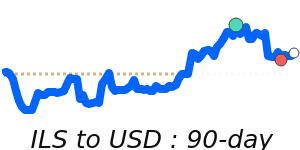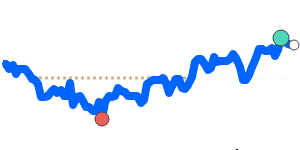The USD to ILS exchange rate has been influenced by a variety of recent developments in both the U.S. and Israeli economies. The U.S. dollar gained some strength following the Federal Reserve's recent decisions, despite a somewhat disappointing ISM manufacturing PMI that indicated continued contraction in factory activity. Analysts expect that comments from dovish Fed policymakers could impact the dollar's performance, as markets adjust to the likelihood of interest rate cuts in the longer term, particularly after the anticipated inflation data release.
In Israel, the economic climate has been supportive for the shekel. A notable decline in the annual inflation rate to 2.5% in September, within the Bank of Israel's target range, may incentivize the central bank to consider interest rate reductions. Furthermore, the Israeli shekel has appreciated approximately 9.3% against the U.S. dollar in recent months, largely due to enhanced investor sentiment and weakening dollar dynamics. UBS analysts have revised their forecasts, projecting further strengthening of the shekel, citing reductions in geopolitical risk premiums and robust economic fundamentals.
Recent data shows the USD to ILS exchange rate has reached 7-day highs near 3.2592, which is about 2.2% lower than its three-month average of 3.3331. The exchange rate has remained relatively stable, fluctuating within a 6.4% range, from 3.2512 to 3.4578, reflecting cautious market sentiment amid broader economic factors.
In summary, while the U.S. dollar's near-term outlook remains somewhat supported by Fed policy, the shekel's strength against the dollar is bolstered by favorable economic developments in Israel. Stakeholders should monitor forthcoming inflation data and central bank signals closely, as these will be critical in shaping future exchange rate dynamics.


